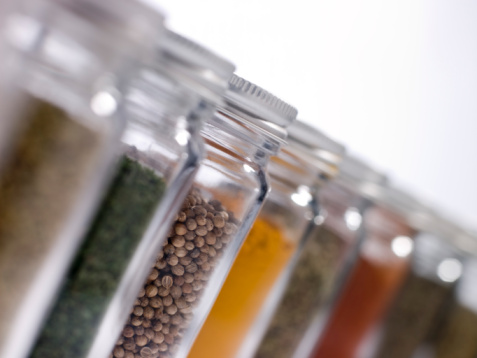Danger lurking in your spice cabinet

Recent news from the Food and Drug Administration is sure to leave a bad taste in many people’s mouths.
According to the federal agency, 12 percent of spices brought into the United States are tainted with insect parts and rodent hairs. In a new report recently released, the FDA said it also found that nearly 7 percent of spice imports examined by federal inspectors were contaminated with salmonella, a toxic bacterium that can make humans very sick.
The results are from tests of imported spices between 2007 and 2010 that were published in the journal Food Microbiology, which showed that the seasonings are twice as likely as other inspected foods to be contaminated with salmonella and insect parts.
In a statement to the New York Times, Jane M. Van Doren, a food and spice official with the FDA called the agency’s findings “a wake-up call,” and suggested that the problem stems from poor storage and processing practices.
During the three-year period between 2007 and 2010, the FDA said it refused a total of 749 shipments of spice into the U.S. due to salmonella contamination. Another 238 shipments were denied because of the presence of what the agency called “filth” – insects, hair, excrement and other materials. Because spices are produced by a wide variety of agricultural practices, according to the report, it increases the potential for bird, animal or human contamination. For example, spices from small farms are often combined and sold to packing companies or exchanges. They can be stored for years, which can increase the chances of exposure to unclean conditions.
Spice imports from India and Mexico have been found to have the highest rate of contamination. The FDA reports that nearly one-quarter of the spices, food colorings and oils used in the U.S. comes from India.
Somewhat good news for consumers is that the FDA said some of the tainted spices found at the border were later treated to eliminate any possible pathogens. This means that salmonella was likely gone by the time the spices were consumed. And despite the findings, the FDA said it’s not recommending consumers stay away from spices. That’s because according to the agency, the amount of spice generally eaten in a meal is relatively tiny, which means people have a smaller chance of getting sick from a contaminated spice.
Shortly after the report was released the largest U.S. seller of flavored products, McCormick & Co. released the following statement on its website: “Whether they’re grown in the U.S. or other parts of the world, McCormick exercises the same high level of quality control throughout our supply chain — including several million ingredient analyses each year and a natural steam pasteurization process.”
Other experts who have weighed in on the issue say the chances of someone getting sick can be reduced by adding spices to food before it is cooked rather than adding a dash or two right before it’s served.
Related Posts
Comments
About the Author
health enews staff is a group of experienced writers from our Advocate Health Care and Aurora Health Care sites, which also includes freelance or intern writers.

















